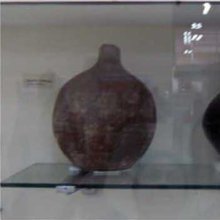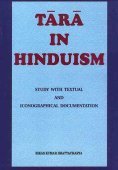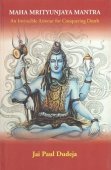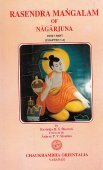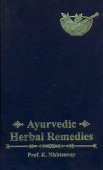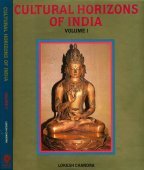Roman, Roma: 32 definitions
Introduction:
Roman means something in Buddhism, Pali, Hinduism, Sanskrit, Marathi, Hindi, biology. If you want to know the exact meaning, history, etymology or English translation of this term then check out the descriptions on this page. Add your comment or reference to a book if you want to contribute to this summary article.
Images (photo gallery)
In Hinduism
Purana and Itihasa (epic history)
Source: JatLand: List of Mahabharata people and placesRoma (रोम) is a name mentioned in the Mahābhārata (cf. II.28.49, II.47.26) and represents one of the many proper names used for people and places. Note: The Mahābhārata (mentioning Roma) is a Sanskrit epic poem consisting of 100,000 ślokas (metrical verses) and is over 2000 years old.

The Purana (पुराण, purāṇas) refers to Sanskrit literature preserving ancient India’s vast cultural history, including historical legends, religious ceremonies, various arts and sciences. The eighteen mahapuranas total over 400,000 shlokas (metrical couplets) and date to at least several centuries BCE.
Kavya (poetry)
Source: academia.edu: Bhoja’s Mechanical GardenRoma is the name of an ancient kingdom mentioned in the 12th century Lokapaññati (“description of the world”), a Pali text from Burma.—[...] The Lokapaññati’s rendition of the story begins as a tale of two kingdoms: that of Pāṭaliputta (Sanskrit: Pātaliputra ) and the distant land of “Roma”. Roma, according to the story, was filled with makers of automata—what the text calls literally “machines that were the vehicles of spirits,” bhūtavāhanayanta, or mechanical beings animated by a kind of life force. In Roma, these machines carried out many functions, like commerce (buying and selling), agriculture, and protection. The secrets of this technology were fiercely guarded, and the machine-makers (yantakāras) of Roma were expected to report periodically to the royal court. If there was any prolonged absence, an automaton was sent to hunt down and kill the errant artisan, preventing the knowledge from spreading to other realms.

Kavya (काव्य, kavya) refers to Sanskrit poetry, a popular ancient Indian tradition of literature. There have been many Sanskrit poets over the ages, hailing from ancient India and beyond. This topic includes mahakavya, or ‘epic poetry’ and natya, or ‘dramatic poetry’.
Ayurveda (science of life)
Toxicology (Study and Treatment of poison)
Source: Shodhganga: Kasyapa Samhita—Text on Visha Chikitsa1) Roman (रोमन्) or “hair” refers to one of the thirteen sources of Jaṅgama (mobile) poison, as described in the Kāśyapa Saṃhitā: an ancient Sanskrit text from the Pāñcarātra tradition dealing with both Tantra and Viṣacikitsā—an important topic from Āyurveda which deals with the study of Toxicology (Viṣavidyā or Sarpavidyā).—Kaśyapa states in the fourth Adhyāya that Śiva taught him that poisons are of five kinds viz. immobile, mobile, artificial, caused by planets and (arising out of) doubt. The sources of these five kinds of viṣa, Kaśyapasaṃhitā deals mainly with the sthāvara (immobile), jaṅgama (mobile) poison according to Kaśyapa are thirteen in number [viz., hair (roman)].
2) Roma (रोम) or Romamaṇḍalī refers to one of the sixteen varieties of Maṇḍalī snakes, according to the Kāśyapa Saṃhitā.—Kāśyapa sources his antidotes from a multitude plants, a few minerals, salts and animal products available in nature. All these plants fall under various groups called gaṇas, as pronounced by the Ayurvedic Nigaṇṭus.
Unclassified Ayurveda definitions
Source: archive.org: Vagbhata’s Ashtanga Hridaya Samhita (first 5 chapters)Roman (रोमन्) refers to the “short hair on the body”, and is mentioned in verse 2.30 of the Aṣṭāṅgahṛdayasaṃhitā (Sūtrasthāna) by Vāgbhaṭa.—Accordingly, “one shall follow a middle course in all (religious and profane) matters.—One’s hair [viz., roman], nails, and beard (shall be) short, one’s feet and secretory paths not dirty”.
Note: Roman, strictly speaking, denotes the short hair on the body (Tibetan: spu; a fine example is the following kha-spu, lit. “face-hair”, which stands for śmaśru, “beard”), whereas keśa signifies the long hair of the head (Tibetan: skra). This differentiation, though neglected in the original, has been re-established by the Tibetans.

Āyurveda (आयुर्वेद, ayurveda) is a branch of Indian science dealing with medicine, herbalism, taxology, anatomy, surgery, alchemy and related topics. Traditional practice of Āyurveda in ancient India dates back to at least the first millenium BC. Literature is commonly written in Sanskrit using various poetic metres.
In Buddhism
Theravada (major branch of Buddhism)
Source: Pali Kanon: Pali Proper NamesThere were four kings of this name sixty thousand kappas ago, all previous births of Sataramsika Thera. Ap.i.104.
Theravāda is a major branch of Buddhism having the the Pali canon (tipitaka) as their canonical literature, which includes the vinaya-pitaka (monastic rules), the sutta-pitaka (Buddhist sermons) and the abhidhamma-pitaka (philosophy and psychology).
Mahayana (major branch of Buddhism)
Source: Wisdom Library: Maha Prajnaparamita Sastra1) Roma (रोम) refers to “hair”, according to Mahāprajñāpāramitāśāstra (chapter 19).—Accordingly, “Furthermore, some say that generosity is the cause and condition (hetupratyaya) for obtaining the thirty-two marks. Why is that? [...] When one gives, one says: “May I be useful”, and the generous disposition (dānacitta) increases; this is why one obtains the marks consisting of having a high instep (utsaṅgacaraṇa) and hair standing up (ūrdhvāgra-roma). [...]”.
2) Roman (रोमन्, “hairs”) (Pali Loma) refers to one of the thirty-substances of the human body according to the Visuddhimagga, as mentioned in an appendix of the Mahāprajñāpāramitāśāstra chapter 32-34. The Mahāprajñāpāramitāśāstra mentions thirty-six substances [viz., roman]; the Sanskrit sources of both the Lesser and the Greater Vehicles, physical substances are 26 in number while the Pāli suttas list thirty-once substances.
Source: academia.edu: A Study and Translation of the GaganagañjaparipṛcchāRoma (रोम) refers to “hair”, according to the Gaganagañjaparipṛcchā: the eighth chapter of the Mahāsaṃnipāta (a collection of Mahāyāna Buddhist Sūtras).—Accordingly as The Lord said: “O Śāriputra, in the buddha-field of the Tathāgata Ekaratnavyūha, there is a Bodhisattva, the great being Gaganagañja who is resplendent by the splendor of merit (puṇya-tejas), [...] who has proclaimed the dharma from all hair-pores (sarva-roma-kūpa-dharmākhyāna)) in accordance with individual suitabilities as adorned with the dharma, has attained all qualities of a buddha on the palm of his hand as adorned with manifestation, has illuminated all buddha-fields as adorned with splendor, [...]”.
Source: De Gruyter: A Buddhist Ritual Manual on AgricultureRoma (रोम) refers to the “hairs (of one’s body)”, according to the Vajratuṇḍasamayakalparāja, an ancient Buddhist ritual manual on agriculture from the 5th-century (or earlier), containing various instructions for the Sangha to provide agriculture-related services to laypeople including rain-making, weather control and crop protection.—Accordingly, [as the Nāga-kings said to Bhagavān], “O Bhagavān, we are destroyed and burnt, our bodies are set on fire. The hairs of our bodies are bristling and standing erect (roma-harṣaṇa). [...] O Bhagavān, when we all stand visibly in front of the Bhagavān, thus frightened and trembling, with the hairs on our bodies (roma-kūpa) bristling, overcome with great dreadful fear, standing all with agitated minds, O Bhagavān, how will monks be in the last time, in the last age, after the Tathāgata has departed? [...]”.

Mahayana (महायान, mahāyāna) is a major branch of Buddhism focusing on the path of a Bodhisattva (spiritual aspirants/ enlightened beings). Extant literature is vast and primarely composed in the Sanskrit language. There are many sūtras of which some of the earliest are the various Prajñāpāramitā sūtras.
Biology (plants and animals)
Source: Google Books: CRC World Dictionary (Regional names)Roma in India is the name of a plant defined with Cinnamomum tamala in various botanical sources. This page contains potential references in Ayurveda, modern medicine, and other folk traditions or local practices It has the synonym Laurus tamala Buch.-Ham. (among others).
Example references for further research on medicinal uses or toxicity (see latin names for full list):
· Botanica expeditior (1760)
· Handbuch der medicinisch-pharmaceutischen Botanik (1831)
· FBI (1886)
· Species Plantarum (1753)
· Transactions of the Linnean Society of London (1822)
If you are looking for specific details regarding Roma, for example chemical composition, side effects, diet and recipes, extract dosage, health benefits, pregnancy safety, have a look at these references.

This sections includes definitions from the five kingdoms of living things: Animals, Plants, Fungi, Protists and Monera. It will include both the official binomial nomenclature (scientific names usually in Latin) as well as regional spellings and variants.
Languages of India and abroad
Pali-English dictionary
Source: BuddhaSasana: Concise Pali-English Dictionaryroma : (nt.) hair on the body.
Source: Sutta: The Pali Text Society's Pali-English DictionaryRoma, (nt.) (Vedic roman; the usual P. form is loma (q. v.)) the hair of the body J. V, 430 (where in roma-rājiyā maṇḍita-udarā as explanation of loma-sundarī); Sdhp. 119 (°kūpa), (Page 577)

Pali is the language of the Tipiṭaka, which is the sacred canon of Theravāda Buddhism and contains much of the Buddha’s speech. Closeley related to Sanskrit, both languages are used interchangeably between religions.
Marathi-English dictionary
Source: DDSA: The Molesworth Marathi and English Dictionaryrōma (रोम).—n (S) A hair of the body.
Source: DDSA: The Aryabhusan school dictionary, Marathi-Englishrōma (रोम).—n A hair of the body.
Marathi is an Indo-European language having over 70 million native speakers people in (predominantly) Maharashtra India. Marathi, like many other Indo-Aryan languages, evolved from early forms of Prakrit, which itself is a subset of Sanskrit, one of the most ancient languages of the world.
Sanskrit dictionary
Source: DDSA: The practical Sanskrit-English dictionaryRoma (रोम).—A hole, cavity.
Derivable forms: romaḥ (रोमः).
Source: DDSA: The practical Sanskrit-English dictionaryRoman (रोमन्).—n. [ru-manin Uṇādi-sūtra 4.15]
1) The hair on the body of men and animals; especially, short hair, bristles or down; रोमाणि च रहस्यानि सर्वाण्येव विवर्जयेत् (romāṇi ca rahasyāni sarvāṇyeva vivarjayet) Ms. 4.144;8.116; Bhāgavata 11.18.3.
2) The feathers of birds.
3) The scales of a fish.
Source: Cologne Digital Sanskrit Dictionaries: Edgerton Buddhist Hybrid Sanskrit DictionaryRoma (रोम).—m. (otherwise only nt.), hair: n. pl. romāḥ Lalitavistara 310.1 (end of line of verse).
--- OR ---
Romā (रोमा).—name of a goddess: Mahāsamājasūtra Waldschmidt Kl. Sanskrit Texte 4, 185.15. Pali parallel has Rojā (supported by one Chin. version which points to reconstructed ro-ya; but another Chin. indicates so-ma).
Source: Cologne Digital Sanskrit Dictionaries: Shabda-Sagara Sanskrit-English DictionaryRoma (रोम).—n.
(-maṃ) Water. m.
(-maḥ) A hole.
Source: Cologne Digital Sanskrit Dictionaries: Shabda-Sagara Sanskrit-English DictionaryRoman (रोमन्).—n. (-ma) The hair of the body. E. ru to make, Unadi aff. manin, form irr.
Source: Cologne Digital Sanskrit Dictionaries: Benfey Sanskrit-English DictionaryRoma (रोम).—n. Water.
Source: Cologne Digital Sanskrit Dictionaries: Benfey Sanskrit-English DictionaryRoman (रोमन्).—i. e. ruh + man, n. The hair of the body, [Pañcatantra] iii. [distich] 186.
Source: Cologne Digital Sanskrit Dictionaries: Cappeller Sanskrit-English DictionaryRoma (रोम).—(—°) = rāman.
Source: Cologne Digital Sanskrit Dictionaries: Cappeller Sanskrit-English DictionaryRoman (रोमन्).—[neuter] hair (on the body of men or beasts), the feathers of a bird or the scales of a fish.
Source: Cologne Digital Sanskrit Dictionaries: Monier-Williams Sanskrit-English Dictionary1) Roma (रोम):—1. roma m. (of uncertain derivation, but cf. 1. ropa) a hole, cavity, [cf. Lexicographers, esp. such as amarasiṃha, halāyudha, hemacandra, etc.]
2) n. water, [cf. Lexicographers, esp. such as amarasiṃha, halāyudha, hemacandra, etc.]
3) 2. roma m. the city Rome, [Catalogue(s)] (cf. bṛhad-roma and next)
4) [plural] Name of a people, [Viṣṇu-purāṇa]
5) a 3. 4. roma. See under 1. roman.
6) [from roman] 3. roma in [compound] for roman.
7) [from roman] 4. roma (ifc.) = roman (cf. a-dīrgha-, sa-r).
Source: Cologne Digital Sanskrit Dictionaries: Monier-Williams Sanskrit-English Dictionary1) Roman (रोमन्):—1. roman n. ([probably] connected with √1. ruh; cf. loman) the hair on the body of men and animals, ([especially]) short hair, bristles, wool, down, nap etc. (less properly applicable to the long hair on the head and beard of men, and to that of the mane and tail of animals), [Ṛg-veda] etc. etc.
2) the feathers of a bird, [Rāmāyaṇa] (cf. mayūra-r)
3) the scales of a fish (See pṛthu-r).
4) 2. roman m. [plural] Name of a people, [Mahābhārata; Viṣṇu-purāṇa]
Source: Cologne Digital Sanskrit Dictionaries: Yates Sanskrit-English DictionaryRoma (रोम):—(maṃ) 1. n. Water. m. A hole.
Source: Cologne Digital Sanskrit Dictionaries: Yates Sanskrit-English DictionaryRoman (रोमन्):—(ma) 5. n. The hair of the body.
[Sanskrit to German]
Sanskrit, also spelled संस्कृतम् (saṃskṛtam), is an ancient language of India commonly seen as the grandmother of the Indo-European language family (even English!). Closely allied with Prakrit and Pali, Sanskrit is more exhaustive in both grammar and terms and has the most extensive collection of literature in the world, greatly surpassing its sister-languages Greek and Latin.
Hindi dictionary
Source: DDSA: A practical Hindi-English dictionaryRoma (रोम) [Also spelled rom]:—(nm) (small and soft) hair (on the body); ~[kūpa] the pores on the surface of the skin; ~[guccha] cirri; ~[pūrṇa] hairy, lanate; ~[rājī] see [romālī; ~harṣaka] thrilling; awful, dreadful, terrible; ~[harṣaṇa] horripilation; -[roma meṃ] in the whole being, throughout the body; •[basanā] to pervade through the whole being; -[roma se] with heart and soul, with one’s whole being.
...
Kannada-English dictionary
Source: Alar: Kannada-English corpusRōma (ರೋಮ):—
1) [noun] the hair on the body of human beings and animals.
2) [noun] the feathers of a bird.
Kannada is a Dravidian language (as opposed to the Indo-European language family) mainly spoken in the southwestern region of India.
See also (Relevant definitions)
Starts with (+72): Romabhumi, Romadvara, Romagarta, Romaguccha, Romaguchchha, Romaharsha, Romaharshana, Romahrit, Romakarnaka, Romakeshara, Romakupa, Romalata, Romali, Romamcagollu, Romamcaia, Romamcakaraka, Romamcakari, Romamcana, Romamcanagollu, Romamcanavesagu.
Ends with (+30): Bahiroman, Bahuroman, Bhayasamhrishtaroman, Diptaroman, Dirgharoman, Goroman, Hamsaroman, Hariroman, Hinaroman, Hiranyaroman, Hrasvaroman, Hrishtaroman, Kancanaroman, Kapotaroman, Karuroman, Khadgaroman, Khararoman, Kritiroman, Maharoman, Marjararoman.
Full-text (+465): Romaharsha, Romavikara, Romakarnaka, Romakupa, Romanca, Romaka, Romodbheda, Romaguccha, Suciroman, Stabdharoman, Romali, Romasamvejana, Raumayana, Romabaddha, Romabhumi, Romavibheda, Romakeshara, Romagutsa, Romalata, Romodgati.
Relevant text
Search found 123 books and stories containing Roman, Roma, Rōma, Romā; (plurals include: Romans, Romas, Rōmas, Romās). You can also click to the full overview containing English textual excerpts. Below are direct links for the most relevant articles:
Shrimad Bhagavad-gita (by Narayana Gosvami)
Verse 11.14 < [Chapter 11 - Viśvarūpa-darśana-yoga (beholding the Lord’s Universal Form)]
Verse 1.29 < [Chapter 1 - Sainya-Darśana (Observing the Armies)]
Verse 18.74 < [Chapter 18 - Mokṣa-yoga (the Yoga of Liberation)]
Rig Veda (translation and commentary) (by H. H. Wilson)
List of Mahabharata people and places (by Laxman Burdak)
Bhakti-rasamrta-sindhu (by Śrīla Rūpa Gosvāmī)
Verse 2.2.20 < [Part 2 - Ecstatic Expressions (anubhāva)]
Verse 3.2.68 < [Part 2 - Affection and Service (dāsya-rasa)]
Verse 3.2.11 < [Part 2 - Affection and Service (dāsya-rasa)]
Satirical works of Kshemendra (study) (by Arpana Devi)
4. Origin of Satire < [Chapter 1 - Introduction]
8.4. Summary of A Tale of a Tub < [Chapter 1 - Introduction]
1. Meaning of Satire < [Chapter 1 - Introduction]
Garga Samhita (English) (by Danavir Goswami)
Verse 2.5.14 < [Chapter 5 - The Liberation of Bakāsura]
Verse 1.5.38 < [Chapter 5 - The Lord’s Appearance]
Verse 3.9.15 < [Chapter 9 - The Birth of Śrī Girirāja]
Related products
(+1 more products available)
